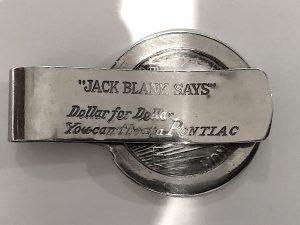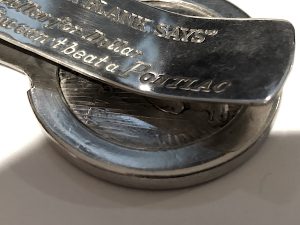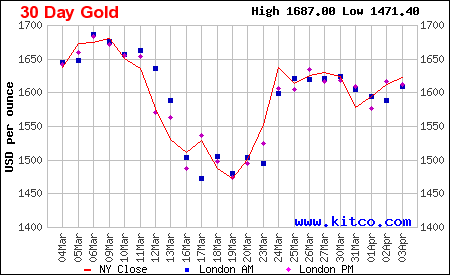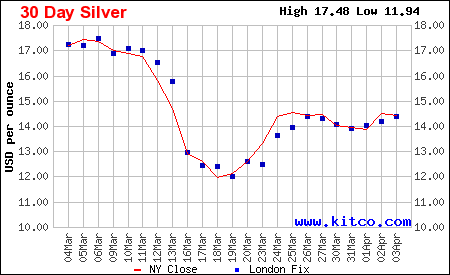Weekly World Numismatic News for February 13, 2022
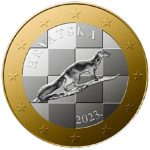
The controversial Croatian 1 Euro coin with the marten design (Image courtesy of the Croatian National Bank)
Although Croatia became a member of the European Union in 2013, the country that used to be part of Yugoslavia became eligible to become a member of the European Exchange Rate Mechanism (ERM) II and must convert to the euro by January 1, 2023.
Croatia is getting ready by updating its minting processes to produce euro coins. The process includes a nationwide contest to create new designs for the side of the euro coins they can customize.
First, the Croats upset Serbia by selecting Nikola Tesla to feature on the 50-cent coin. Tesla, the inventor of alternating current (AC) electricity transmission, is ethnically a Serb buried in Belgrade, Serbia. Throughout his life, Tesla identified himself as Serbian. However, he was born in 1856 in the village of Smiljan, which is part of Croatia today. Serbia does not believe that Tesla should be on a Croatian coin. Croatia disagrees, and the design will stay.This past week, Croatia introduced the design of the 1 euro coin featuring an image of a Pine Marten that may have been copied from a photograph. The marten is a weasel-like animal that lives in many northern climates, including the two species that live in North America. Its prevalence in Croatia led to its selection during the design competition.
However, it appears that the marten image is a “copy” of a photograph by Scottish photographer Iain H. Leach. Leach was told about the design by others who claimed plagiarism. One user on Twitter posted a video comparing the two images by overlapping the designs.
Play the following clip and you decide.
It is the same. Hope you got credit or gave a licence. pic.twitter.com/2VVx9jVChO
— Marko (@mlinka) February 4, 2022
According to one report, a search for “side view marten” will return Leach’s image as one of the first few results fueling the plagiarism charges. Since Google searches use many customizing factors, the only way to force a search to return Leach’s image was to search for “side view marten leach.”
If the artist copied Leach’s photograph, the design would violate his copyright. The Croatian National Bank decided to not use the design.
And now the news…
 → Read more at wrexham.com
→ Read more at wrexham.com
 → Read more at uiargonaut.com
→ Read more at uiargonaut.com
 → Read more at mylondon.news
→ Read more at mylondon.news
 → Read more at netherlandsnewslive.com
→ Read more at netherlandsnewslive.com
Weekly World Numismatic News for April 12, 2020
 Earlier this week, Roundtable Trading announced that the Great American Coin Hunt that is part National Coin Week would go on as planned.
Earlier this week, Roundtable Trading announced that the Great American Coin Hunt that is part National Coin Week would go on as planned.
During the week of April 19-25, 2020, coin dealers will attempt to place collector coins into circulation. Those finding coins are encouraged to log onto social media and show off their finds using the hashtag #GreatAmericanCoinHunt.
Who is spending money and where are they spending it?
With the current COVID-19 stay-at-home orders, The number of places that are now taking cash payments has dwindled. Patrons of restaurants and encouraged to use online ordering and payments before arriving. Delivery services also want items paid for before making the trip to your front door.
In states that have laws that require retail stores to accept cash, retailers are requesting that customers limit “payment options to credit cards/debit cards… to minimize physical contact.”
The PaymentsJournal, a payments industry publications, reported that a study released by RTi Research shows an increase in people showing concern about catching coronavirus from using cash. The studies show that more people have used less cash, and more will use less cash in the future.
If consumers are using less cash in the fewer open retail outlets, then how successful will a coin drop be?
And now the news…
 → Read more at scienceinpoland.pap.pl
→ Read more at scienceinpoland.pap.pl
 → Read more at kitco.com
→ Read more at kitco.com
 → Read more at breakingnews.ie
→ Read more at breakingnews.ie
 → Read more at space.com
→ Read more at space.com
 → Read more at prweb.com
→ Read more at prweb.com
 → Read more at collectspace.com
→ Read more at collectspace.com
 → Read more at stokesentinel.co.uk
→ Read more at stokesentinel.co.uk
Why the ANA does not have online education
 On Wednesday, April 8, 2020, the ANA announced the cancellation of the Summer Seminar. The announcement came two days after Colorado College, the site of the Summer Seminar programs, announced limited access to the campus for summer activities because of the novel coronavirus.
On Wednesday, April 8, 2020, the ANA announced the cancellation of the Summer Seminar. The announcement came two days after Colorado College, the site of the Summer Seminar programs, announced limited access to the campus for summer activities because of the novel coronavirus.
As COVID-19 spreads across the United States, most states have a stay-at-home order in place, preventing people from venturing out. Schools, businesses, religious services, and minor medical appointments are meeting online. Services like Zoom and Microsoft Teams that were once the domain of a few companies have dramatically grown.
Colleges started to move to online courses almost 20 years ago. Lower grades followed with classroom software that enabled virtual lessons. Entrepreneurs found a willing market and started to create an online curriculum to help parents home school their students.
The question is that if this is available to colleges, schools, corporate training, and seminars were online, then why the ANA is not able to offer Summer Seminar online?
ANA President Steve Ellsworth killed an attempt to create online education.
In 2017, then ANA President Gary Adkins initiated the proposal to bring online education to the ANA. Although the concept was good, the process was fraught with members of the Board of Governors thinking they knew better than the headquarters staff and the Technology Committee.
The membership does not give the ANA staff enough credit. The ANA is a complicated organization with a constituency from the novice collector to the largest auction houses. Very few organizations have a mission as broad as “numismatics.” Yet, with dwindling resources, the staff in Colorado Springs manage to keep the ANA running. When someone from the headquarters, including the executive director, says something that would make it easier on them, I will pay attention.
The question of, “What do you want?” became a nagging question. Nobody can tell us what they wanted? How can the Technology Committee write requirements for a system that we do not know what it is supposed to do? The direction was supposed to come from the Education Committee. Participation from the Education Committee ranged from non-existent to inconsistent. We tried to get better input, but they did not seem interested.
The Technology Committee came up with something that resembled requirements, questions about what online education systems can do remained. Executive Director Kim Kiick suggested that we send out a Request for Information (RFI) to potential vendors.
As part of the RFI, the ANA requested that the interested vendors come to the 2018 World’s Fair of Money in Philadelphia to demonstrate their system. Three vendors answered the RFI, and three vendors came to Philadelphia to show their systems.
Two of the three demonstrations were informative. These were companies that provide online educational services to schools, training services for companies, and seminar services for many organizations. The third was a smaller company with a limited educational background but more knowledgable about numismatics.
The company with a limited educational background either was not able or chose not to provide a demonstration of their system. Since some members of the Board favored this company, they were given additional opportunities to answer how their system would meet ANA requirements.
For the next four months, there were significant discussions about what to do next. One member of the Board of Governors was pushing to use the company that could not provide satisfactory answers. It appeared as if this Governor had an agenda to have this company do the work rather than finding the right solution.
The cost was a significant concern. Creating any significant technical project has a very high upfront cost. Every aspect of the initial installation, configuration, integration, and initial operations has a higher price than continual maintenance and incremental updates.
Every indication that working with the company that could not provide satisfactory answers to our basic questions was a penny-wise solution. The company would be able to transition some existing software and make it work quickly. Where that decision would have been pound foolish would have come from the recent crisis because the questions that they could not answer would have been key to maintaining the system in this environment.
In other words, for a short-term win, the ANA would have been hit with a significant black eye when the COVID-19 pandemic drove everyone looking for online content. The proposed system may not have been able to scale, it was not mobile device friendly, and the authoring process is too restrictive to move quickly.
By December 2018, the Board agreed to open the process to competitive bidding. I worked with the headquarters staff to draft a Request for Proposal (RFP). The completed rough draft of the RFP was passed around for internal review.
Unfortunately, the process slowed down because of time restrictions for the understaffed headquarters and the volunteer Tech Committee. There was also a slowdown following the 2019 Board of Governors’ election. After the election, there was little guidance as to how the new president and Board wanted to proceed. The impression was that the new Board did not want to move forward.
The new Board of Governors took control at the 2019 World’s Fair of Money. Instantly everything stopped. Standing committees, whose members are appointed by the president, were left in limbo. There was little communication from President Steve Ellsworth, and nobody was sure what to do next.
It took over a month to hear from Ellsworth. Few people who were talking behind the scenes heard anything. It was known he wanted to make changes, but he was not communicating with anyone who would be impacted.
The silence was curious. The ANA announced the results in early July, and the World’s Fair of Money was four weeks later. Ellsworth was already a member of the Board and knew his way around. Why did he not have a transition? Instead, everything stopped for one month.
In early September, Ellsworth sent his guidelines for the Technology Committee. Missing from his objectives was online education. Regardless of the time and effort that occurred before the World’s Fair of Money, ANA President Steve Ellsworth eliminated the online education program.
According to his goals, it was to be replaced by an e-commerce system to sell goods from the ANA Shop in Colorado Springs.
Which is more important, the American Numismatic Association, a federally chartered organization to provide numismatic education, creating an educational initiative, or selling trinkets from the store? I will leave that as an exercise to the reader.
Collectible to satisfy 3 interests
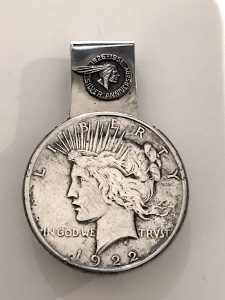 Now that some of us have a little time on our hands, why not think about how you can have fun with your collection. After all, there is more to collecting coins by types or date sets. Sometimes you need to think outside the folder and album and find something different.
Now that some of us have a little time on our hands, why not think about how you can have fun with your collection. After all, there is more to collecting coins by types or date sets. Sometimes you need to think outside the folder and album and find something different.
Take, for example, the money clip pictured here. Embedded in the money clip is a version of my favorite coin, a Peace Dollar. Although the 1922 Peace Dollar may be the most accessible of the series, its presence in this money clip adds to the allure.
But wait, there’s more!
If you look above the Peace Dollar is the Indian Chief emblem of Pontiac, the former automobile division of General Motors. The emblem celebrates the silver anniversary, 25 years, of the Pontiac Motor Division.
 GM introduced Pontiac as a companion marque nameplate to the Oakland Motor Division in 1926. Oakland managed Pontiac to sell cars at a lower price point than other Oakland manufactured vehicles. By 1929, Pontiac became more popular than Oakland, which led to Oakland’s closure in 1931 during the Great Depression.
GM introduced Pontiac as a companion marque nameplate to the Oakland Motor Division in 1926. Oakland managed Pontiac to sell cars at a lower price point than other Oakland manufactured vehicles. By 1929, Pontiac became more popular than Oakland, which led to Oakland’s closure in 1931 during the Great Depression.
Ironically, Pontiac would meet the same fate during the Great Recession. To meet the demands of regulators for accepting a $25 billion federal government loan, GM agreed to close Pontiac and Saturn, sell Saab, and close or sell Hummer as part of the restructuring. Like Oakland, Pontiac is now part of automaking lore.
The 1951 Pontiac Chieftain was a popular car. The Chieftain was available as a sedan, sedan coupe, business coupe, and deluxe convertible coupe. In 1950, Pontiac introduced the Catalina coupe that became a popular option that, in 1959, the Catalina succeeded the Chieftain as a model. The cars sold at the right price point for the burgeoning middle class of the post-war United States.
I drove a 1970 Pontiac Catalina 1977-78. It was big. It was green. It guzzled gas. We nicknamed it, “The Green Bomb.”
Turn over the money clip, and aside from seeing the reverse of the Peace Dollar, the clip is engraved, “Jack Blank Says Dollar for Dollar You can’t Beat a Pontiac.”
Jack Blank Pontiac was located at 1437 Irving Street, NW, in Washington DC. Jack Blank (1901-1980) founded Arcade Pontiac in 1937. In 1951, he renamed the dealership after buying out his partners. Blank retired as company president in 1969.
Blank was a prolific promotor. Aside from buying the rights to be the “Official Car Dealership of the Washington Redskins,” Blank created a lot of promotional items. Numismatically, collectors can find a 1964 encased cent with the dealership’s name and address. The money clip was a one-year promotion.
Blank died in 1980. The last records of the dealership were advertising in 1992 publications.
One collectible satisfies three interests. Numismatically, it is a Peace Dollar. I love the Peace Dollar. Even though this dollar was polished and is glued into an enclosure, it is still a silver dollar.
It is an advertising piece for a vintage car. My two favorite car eras are the muscle cars of the mid-1960s to the early 1970s and the cars of the art deco era. The Chieftain would be redesigned in later years, but it retains the art deco look I like.
Finally, it is part of Washington, DC history that has nothing to do with the government.
It is your turn to go out and find something that will satisfy you numismatically and other interests!
Weekly World Numismatic News for April 5, 2020
I know it is difficult to turn away from the news. It is like watching an automobile accident in slow motion. Every day it seems like there is something else. Unfortunately, this is true about the precious metals market.
Europe, which appears to be taking the closings and stay-at-home orders better than the United States, is trying to figure out what will happen to the economy after everything reopens. That is wreaking havoc with the market.
In one story, Germany is beginning to buy gold in preparation for future spending while institutions in Italy are selling gold to stay afloat. While African mines continue to bring metals to the market, investors are buying gold as a hedge for an uncertain future.
In the last 30-days, the price of gold has bounced back almost to pre-market shaking announcements about COVID-19 in the United States. Other metals have not been as active. According to a source, the only thing keeping the price of silver somewhat stable is its industrial use.
- 30-day Gold Chart as of April 3, 2020 (Source www.kitco.com)
- 30-day Silver Chart as of April 3, 2020 (Source www.kitco.com)
Coins and other collectibles that are sensitive to the precious metals market will begin to see a disparity in prices. Common gold coins whose price is tied to the metals market will rise. Silver coins will likely not move on the metals market.
During a conversation with a professional metals trader, I asked what is next for the market. A person who usually has an answer said that he did not know. He said that most traders are not trying to predict the market but react to whatever happens. One of the problems is that the computer models are wrong. In many cases, firms have halted automated metals trading. He said that the situation is so fluid that some of the computer models were buying from themselves.
If you watch the business news on cable television, you will hear a different opinion from every guest. I plan to use the advice given to me: prepare for the worst and turn off the television.
And now the news…
 → Read more at breakingisraelnews.com
→ Read more at breakingisraelnews.com
 → Read more at finance.yahoo.com
→ Read more at finance.yahoo.com
 → Read more at seekingalpha.com
→ Read more at seekingalpha.com
 → Read more at ancient-origins.net
→ Read more at ancient-origins.net
 → Read more at spectator.sme.sk
→ Read more at spectator.sme.sk
Quarantine Update: COINS ON TELEVISION ARE STILL NOT A GOOD DEAL
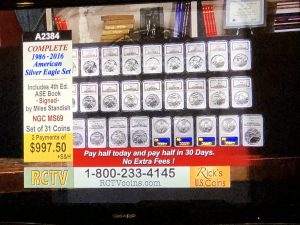 All the little suckers collectors are home captivated by what’s on televison. Let’s see if we can suck them in catch their eyes to separate them from their money sell them common material great coins at inflated great prices!
All the little suckers collectors are home captivated by what’s on televison. Let’s see if we can suck them in catch their eyes to separate them from their money sell them common material great coins at inflated great prices!Since being ordered to stay-at-home, the number of queries about deals for coins from television commercials, infomercials, and the home shopping channels has risen. The number of readers for my article “DON’T BUY COINS ON TELEVISION” has quadrupled in the past week.
The questions are all the same: is it a good buy?
Usually, the answer is NO!
In “DON’T BUY COINS ON TELEVISION,” I compared the offer of a date run of 31 American Silver Eagles each graded NGC MS-69 to a full 34 coin set. I found that the television markup was 50-80% over other alternatives.
The experience with this television con came less than a week after someone came into my shop with a box of overpriced items that he purchased from a home shopping television show and places like the National Collectors Mint. In “The Sad State of Television Numismatics,” I wrote about this experience and some more things to watch out for, including gold-plated tributes that have less than 1-cent worth of gold.
So that you know that this is not new, back in 2011, I wrote about another infomercial that claimed the Presidential $1 Coins were “vanishing from circulation at an alarming rate” because collectors are hoarding them. It was another show where the statements made the overpriced items appear too good to be true.
The worst part of both television pitches is that they both used respected numismatic authors as props. While neither endorsed the products the announcer was pitching, their presence was an effort to give the pitch an air of legitimacy.
I know it is difficult for some to be home during the day. Many of us are used to working and not having this much time on our hands. But it is not the time to stop thinking about getting the best value out of your collection. If you see a pitch for coins on television that intrigues you, then stop, take notes, and do some research before picking up the phone or visiting that URL.
What do the price guides say about the price? If the items are in slabs, go to the price guides for NGC or PCGS and find out what they say the coins should be worth. Want an independent opinion? Check the prices with the Greysheet Price Guide or the Numismedia Fair Market Value Price Guide.
Are there other purchasing options? Use a search engine to search for others who may be selling the same items. Check online auction sites, like eBay.
If you do a little due diligence, you may find that you can purchase the same or similar numismatics at a better price. You might be able to find something with a better grade also at a lower price.
Please do not overpay for your collectibles. If you regret your purchase, then it takes the fun out of collecting. We have enough problems, don’t compound them. Relax and enjoy your collection!

